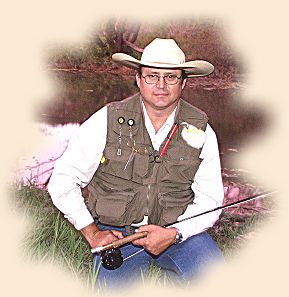
Part One hundred ninety-six |
BulletHead Diver

By Johnny (aka Hillfisher), Texas
|


The BulletHead DiverMaterials:
Instructions:
 1. Lay a bed of thread then tie in Krystal Wing Flash from the bend of the hook up to the eye, minus the same thickness of the foam strip in step 2, whip finish and remove bobbin.
 2. Cut two strips of white foam 3/8 inch wide and about 2 inches long. Use Zap-a-Gap to glue the strips together.
 3. Cut a length of E-Z Braid no less than two thirds the hook shank length.
 4. Push the E-Z Braid over the body and anchor only at the hook bend with the yellow thread, whip finish and remove bobbin.
 5. Use a bodkin or similar device and push through foam in center from length and width.
 6. Push Foam onto hook to just behind the eye.
 7. Place Zap-a-Gap on inside area of foam and fold over top and bottom of hook. Compress with your fingers until glue sets. Usually just a few seconds.
 8. Trim foam to desired shape. I just taper the sides to the rear.
 9. Place a slit in the foam for the diving lip.
 10. Put a drop of Zap-a-Gap in the slit and push the lip tab in to place. Cover head with E-Z Shape Sparkle Body. After the fly dries, glue in eyes.
|
